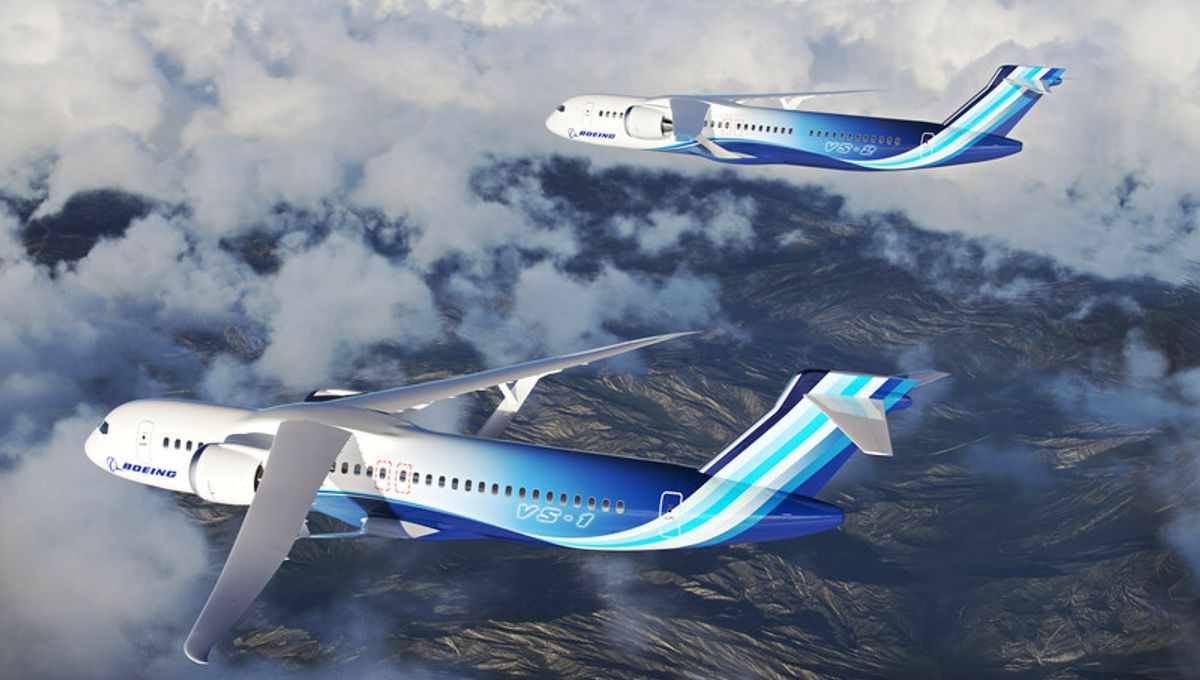
Pound for pound – or, rather, gram for gram – a short-haul flight is one of the least environmentally friendly ways to travel. Long-haul flights are barely better; domestic ones are worse by far. Which, for anybody hoping to live on a planet Earth that’s still habitable in the near future, is kind of a problem.
That’s one reason why NASA launched the Sustainable Flight Demonstrator project – an admittedly ambitious attempt to help the aviation industry reach net zero emissions by 2050. By last year, the project was already seeing some of the first fruits of its labor: a concept from Boeing for a new design of single-aisle aircraft that could result in up to 30 percent lower fuel consumption and lower emissions than the best equivalents currently available.
Dubbed the X-66A, the key to the new plane’s efficiency is its extra-long, thin wings, which are stabilized by a pair of diagonal struts. This design generates lift while decreasing induced drag – a combination which directly reduces the amount of fuel needed for a given journey. It also has an eye on the future: the setup “could eventually accommodate advanced propulsion systems that are limited by a lack of underwing space in today’s low-wing airplane configurations,” Boeing suggests in a statement.
The model received its X-plane designation as a direct result of the Sustainable Flight Demonstrator project – it’s a label given to aircraft specifically designed for research and experiments. It’s the result of more than a decade of research and collaboration between the two organizations into what Boeing calls its “Transonic Truss-Braced Wing” model – and now, for the first time, a full-scale demonstration of the aircraft is being delivered.
“We’re incredibly proud of this designation, because it means that the X-66A will be the next in a long line of experimental aircraft used to validate breakthrough designs that have transformed aviation,” said Todd Citron, Boeing chief technology officer, in June last year. “With the learnings gained from design, construction, and flight-testing, we’ll have an opportunity to shape the future of flight and contribute to the decarbonization of aerospace.”
Should the design prove successful in real-world testing, it could be just the kind of revolution the aerospace industry needs. Single-aisle aircraft are smaller than wide-body planes, and mostly used for short-haul or domestic flights; due to their heavy usage, they account for nearly half of aviation emissions worldwide.
Thanks to this collaboration, however – and an award from NASA of $425 million over seven years, to join with Boeing and partners’ $725 million stake – this new, greener design of aircraft might be in the skies as soon as 2027.
“To reach our goal of net zero aviation emissions by 2050, we need transformative aircraft concepts like the ones we’re flying on the X-66A,” said Bob Pearce, associate administrator for NASA’s Aeronautics Research Mission Directorate. “With this experimental aircraft, we’re aiming high to demonstrate the kinds of energy-saving, emissions-reducing technologies the aviation industry needs.”
Source Link: Meet The X-66A, The Greener Short-Haul Airplane NASA Is Helping Into The Skies